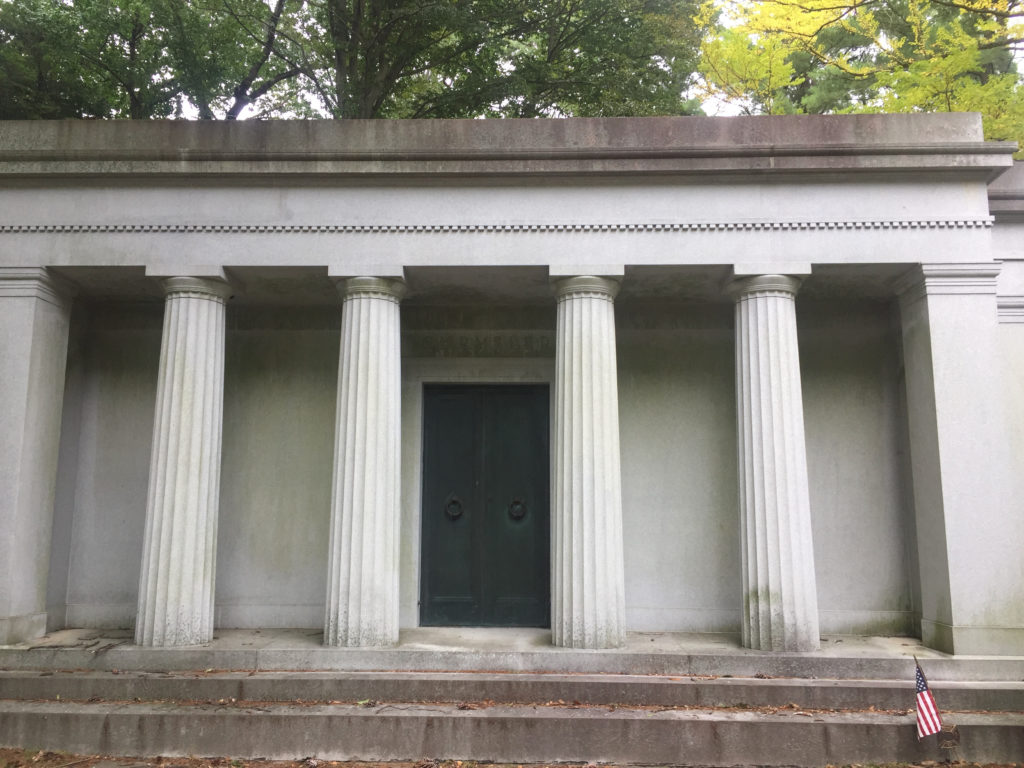Erik Visits an American Grave, Part 782
This is the grave of Walter Chrysler.

Born in Wamego, Kansas in 1875, Chrysler grew up in a railroad family. His father, a Canadian immigrant, was a locomotive engineer. Walter followed him into the railroads, working as a machinist and mechanic. This actually angered his father, who wanted the boy to have a better life and thus had intended to send him to college. But young Walter was a bit of a rounder, known for having a volcanic temper that led to a lot of fights. He was however a very good mechanic. For years, he traveled around the West, mostly, doing mechanic jobs on the railroads. He began to get a reputation for it. Finally, the American Locomotive Company hired him to become works manager at its plant in Allegheny, Pennsylvania.
In 1911, ALCO head James Storrow was interested in expanding the business into the new technology of automobiles. So he called his master mechanic Chrysler into his office and asked if he’d ever thought about developing cars. Indeed he had. He loved machines and did want to work on this exciting new technology. He bought his first car when he was working in Iowa in 1908, even though he had no idea how to drive one. So Storrow arranged for him to go work at the Pontiac factory in Flint, Michigan. He stayed there until 1916, when William Durant took over General Motors. Chrysler, who had become good at building connections with the wealthy (a big change from his early life when he got fired from jobs for fighting), wanted to leave at this point because he was close to the bankers who ran GM before this. But Durant made him an incredibly lucrative offer to stay on board, granting him near total control as well. The offer was, in modern money, $230,000 a month with a $500,000 yearly bonus. Yeah, I’d stay too.
But by 1919, the two men were butting heads. Chrysler was a shrewd capitalist who was always invested in cutting costs. Durant liked to spend and to think big. It wasn’t working. Durant bought him out for $10 million. He was now one of the richest people in the United States. Chrysler then took over the struggling Willys-Overland Motor Company, based in Toledo. He got $1 million a year to run it, but still did not get along with the other company leaders. He left that two years later. This time, he took over another struggling car manufacturer, Maxwell. Chrysler turned this into the firm named after himself in 1925. He then built his empire quickly, having the money to do so. He created the Plymouth and DeSoto brands to go along with Chrysler and then bought Dodge from the Dodge Brothers. What made Chrysler work as a brand is that it combined style with a low cost. In the car world of that time, Ford was known as the car of the working man and GM the car of the middle and upper classes. Chrysler combined the two, providing a nice car for less than $2,000. Plymouth was designed as an even more low cost vehicle to cut into the Ford market even more, which GM was also competing in with its Chevrolets.
He was so filthy rich at this time that he was able to run his empire from wherever. He definitely spent his money, building huge mansions in New York and Virginia. He was deeply invested in the planning, design, and building of the iconic Chrysler Building in New York, which was the tallest building in the world for one year until the Empire State Building surpassed it in 1931. His son became one of the top horse breeders in the world, which shows where this family was headed. Long ways from a railroad mechanic in Kansas. He retired in 1936, serving only a senior figure and of course raking in the money. But when his wife died in 1938, Chrysler went into a serious decline. He had a stroke soon after, never really recovered, and died in 1940. He was 65 years old.
Walter Chrysler is buried in Sleepy Hollow Cemetery, Tarrytown, New York.
If you would like this series to visit other automobile capitalists, you can donate to cover the required expenses here. Lee Iacocca is in Troy, Michigan and William Durant is in The Bronx. Previous posts in this series are archived here.


